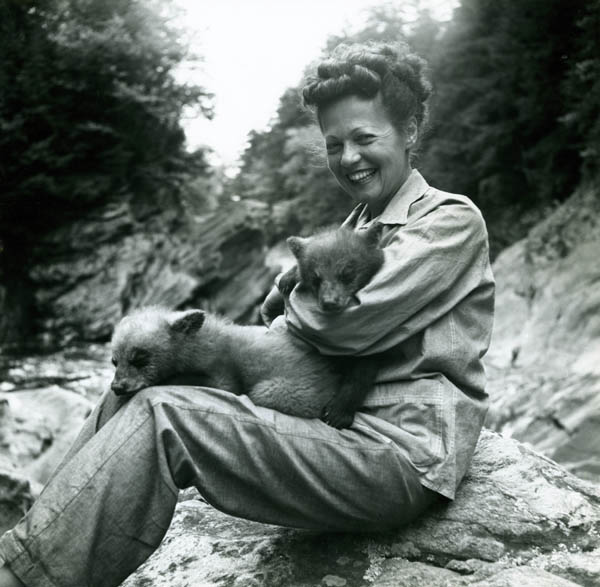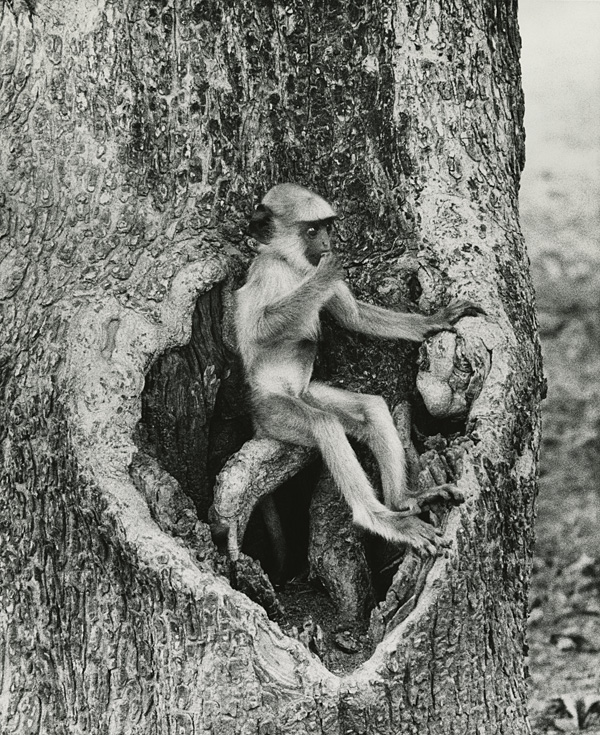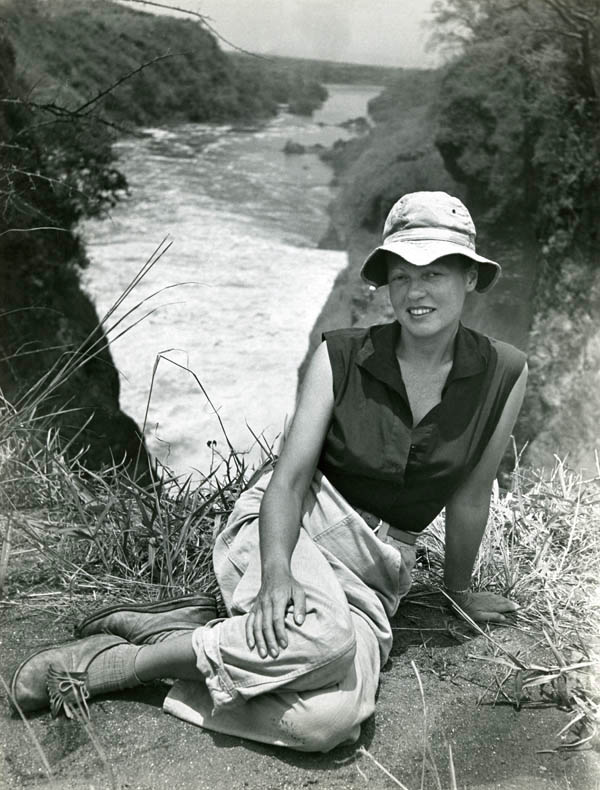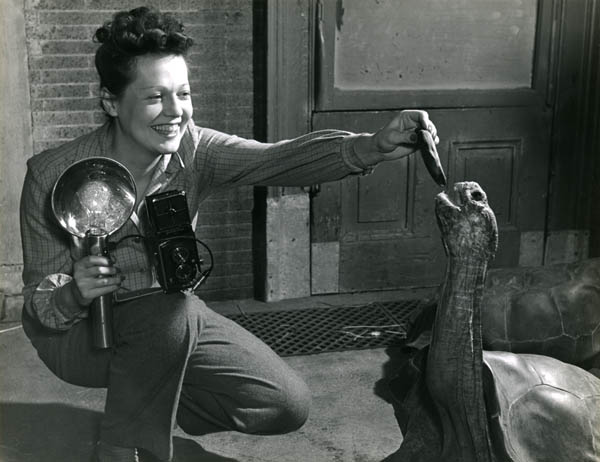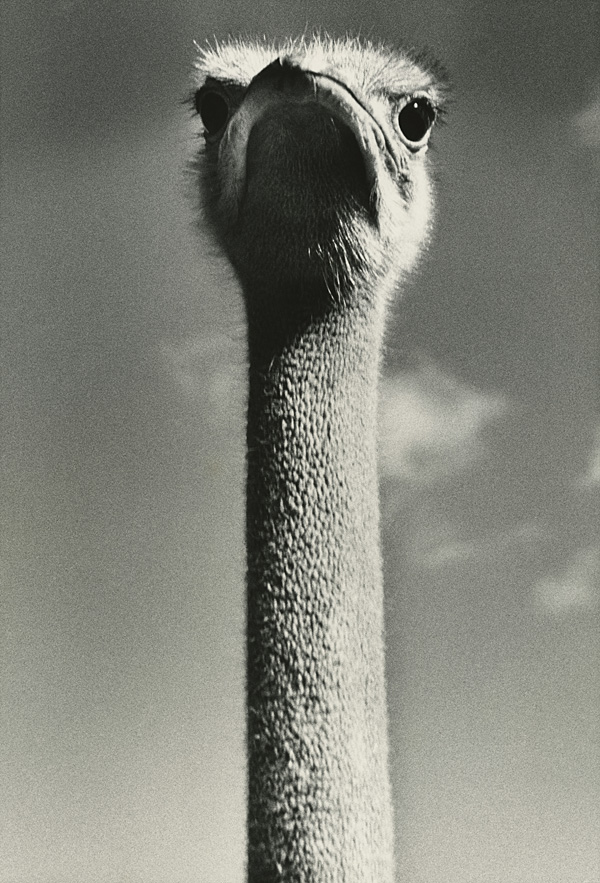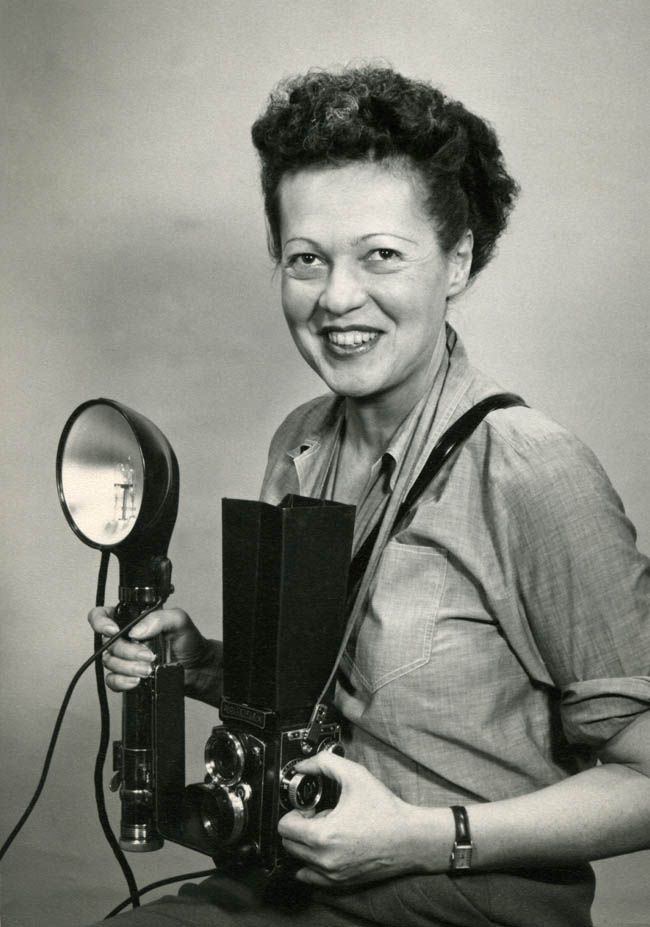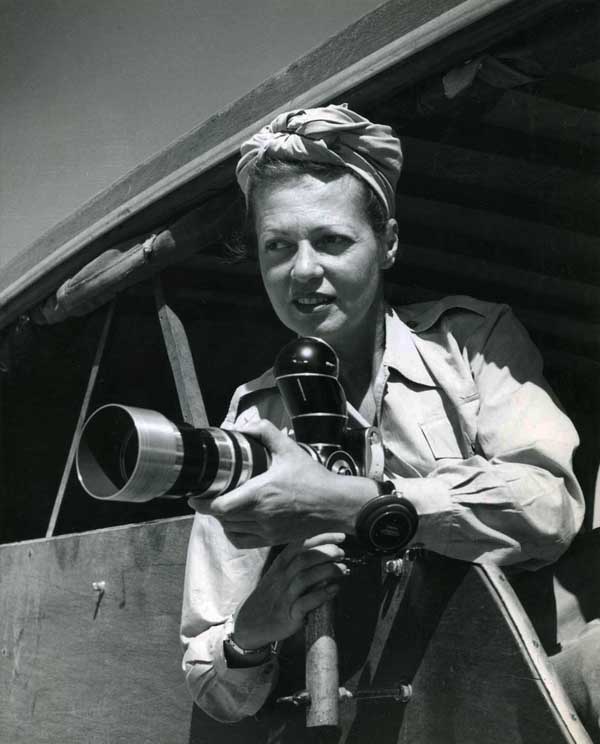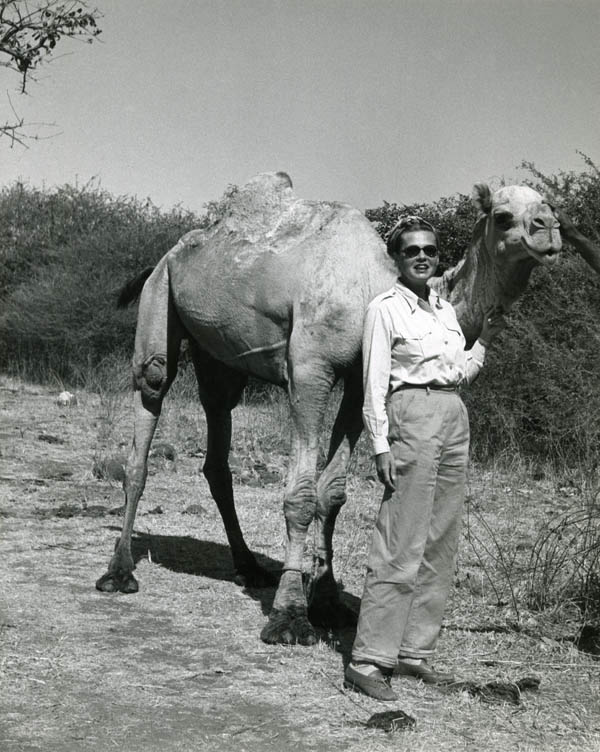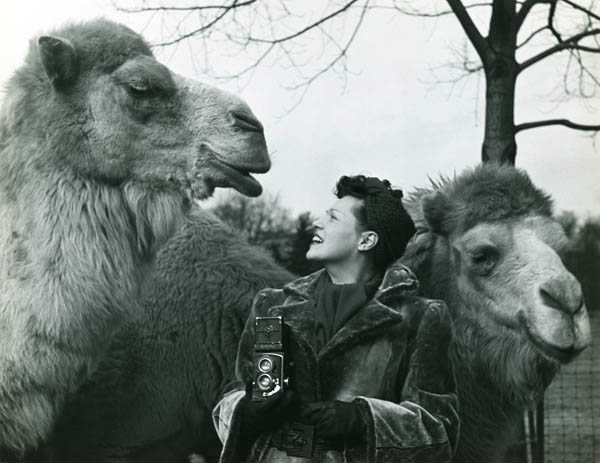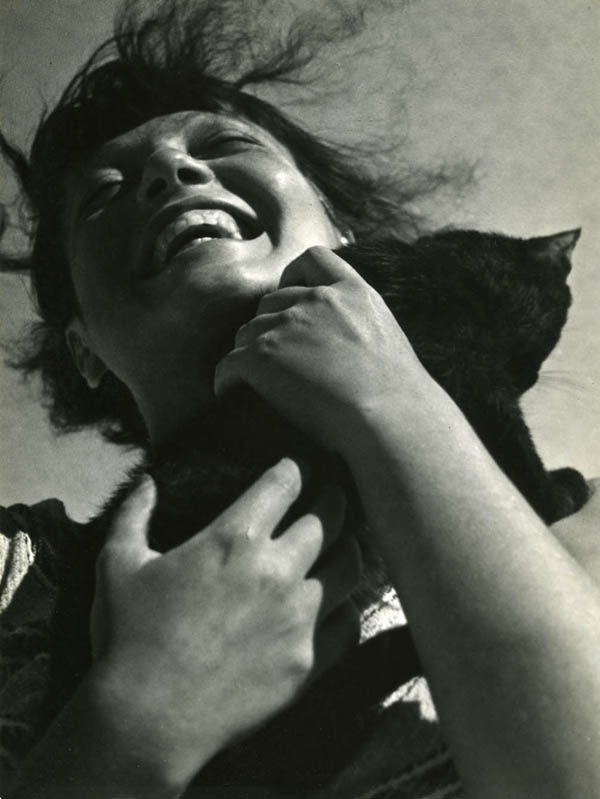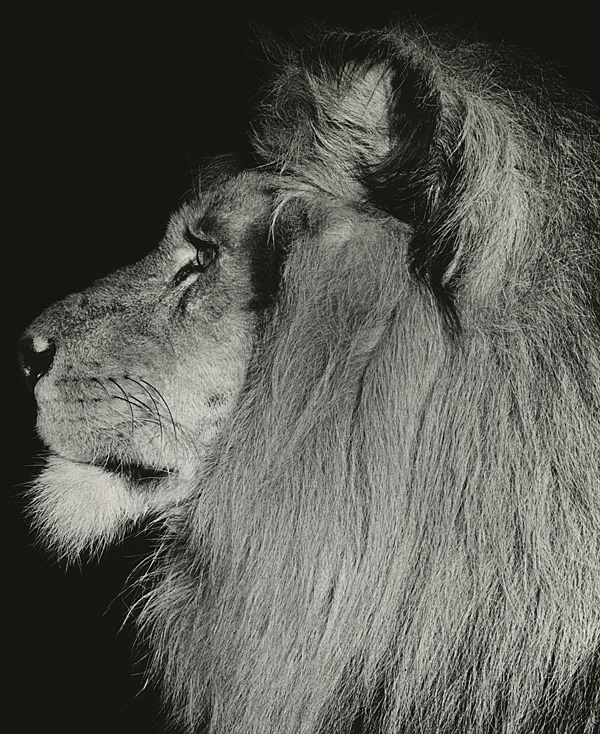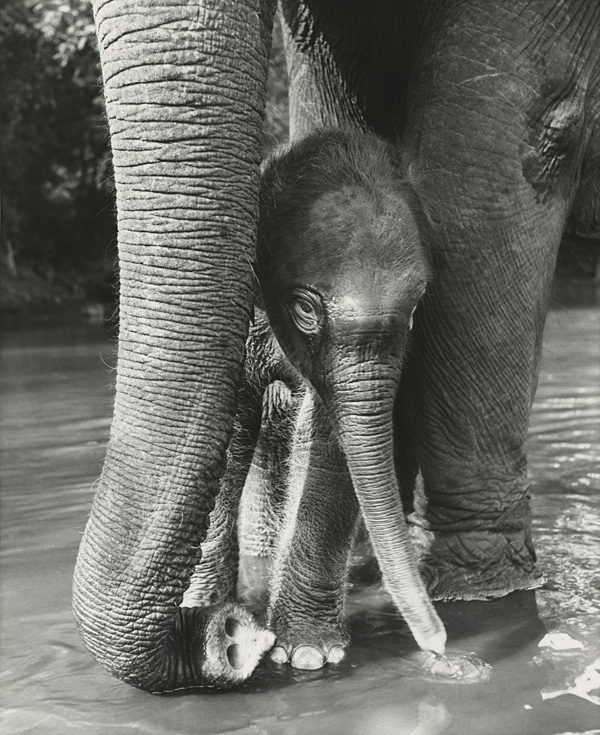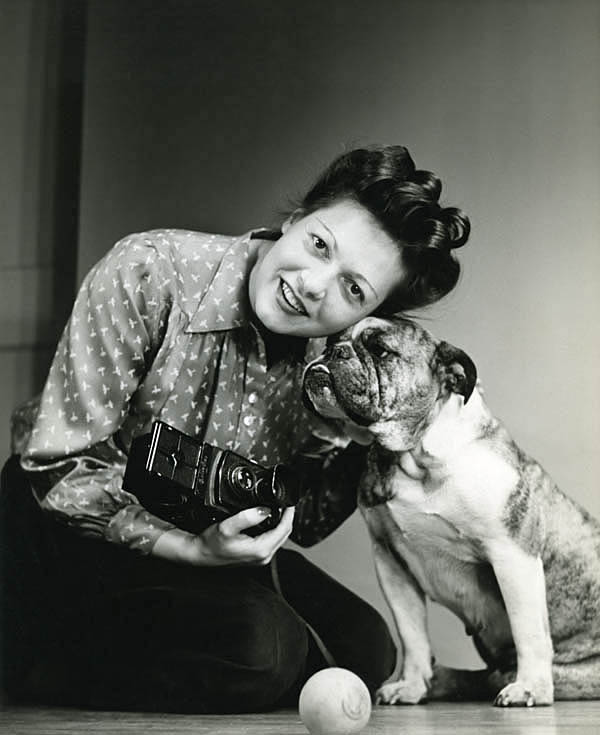Ylla's Citizenship and How she used her name
Unfortunately, Ylla's life and work are not well known today, although her story is intertwined with the history of the twentieth century.
Very little information is available about Ylla's childhood, her precise relationship with Hungary or the sense of her Hungarian identity. It is true that her father was Hungarian, but Ylla was born an Austrian and her mother tongue was German; although she spoke Serbian with her mother. She spent part of her childhood in Budapest, but at a German- language boarding school. In later years, Hungarian émigré artists in Paris considered her Hungarian, and we know that she spoke Hungarian very well. Even more complex picture emerges from letters and documents dating from around the Second World War, asserting that she was a Romanian citizen with no passport. Ylla wrote this herself in letters, probably due to the need to adapt to the political situation of the time. During my research, several people have claimed that Ylla usually introduced herself as a Hungarian.
Ylla was born on August 16, 1911, under the name of Camilla Henriette Koffler (Koffler Kamilla) in Vienna. Her use of names then changed several times over the years. Based on data from various archives and immigration agencies, the name was Camilla Koffler during her time in Europe, but in some documents her name was Kofler. When she arrived in the United States, she began to use the name Ylla Koffler in official documents, but again this sometimes is Kofler and in some US documents, it is Ylla Camilla Koffler. There is also a document issued by the Brazilian Immigration Office, where her name is registered as Ylla Koffer. In others we know for sure it's her, and the variance is more likely a typing error for example, Ylla Joffler. We also have a lot of conflicting data about her citizenship and origin.
She is usually represented as an Austrian citizen, but also appears as a Yugoslavian citizen and later as a US citizen in various biographies.
Romanian, Serbian, Hungarian and Yugoslavian origins are also given in official documents, but in other sources, she is attributed French or Belgian nationality, although these are not official documents. Her parents' name usage and origin are similarly confusing. Her mother's name is presented in at least 4-5 versions in various official papers, mostly as Serbian or Yugoslavian, but it is also considered to be Hungarian. We know very little about her father, but he is usually mentioned as a Hungarian, in some places as a Romanian, or as a Hungarian from Transylvania.
Her parents and the First World War
Ylla's birth was registered in the Vienna Jewish community. Her mother, Margita Leipnik (Leispnik in the documents of the Brazilian immigration office), came from a Serbian Jewish family from Sisak in the Austro-Hungarian Monarchy, which today belongs to Croatia.
Her father, Max Heinrich Koffler, came from Brāila in Wallachia, which was part of the Kingdom of Romania, from a Hungarian upper-class Jewish family. Her father, as a businessman, travelled a lot. The family often travelled with him and usually lived in hotels, but they always returned to Vienna. Max Heinrich and Margita divorced before the First World War and Ylla stayed with her mother. After the outbreak of the War, Ylla and her mother constantly moved around between Vienna, Budapest, Szeged, Zagreb, and Bucharest, and were taken in by friends or family members. They constantly were on the road, often on foot. Ylla remembered at this stage of her life: "my mother sewed her jewellery into her clothes while hiding cash in my shoes and sleeping on flour bags."
School years and the name Ylla
After the war, Ylla’s mother settled in Belgrade, where she worked as a decorator. Ylla was enrolled in a German-Language boarding school in Budapest, where her tuition was paid by her father. Ylla studied here from 1919 to 1926. The school operated as a German School in Budapest, founded in 1908 and headquartered in Kálmán Street until 1920, and then moved to Damjanich Street 4-6. The school was bombed during World War II, the building was looted, and the school's archives were completely destroyed.
Ylla then moved with her mother to Belgrade, where she studied sculpture at the Academy of Fine Arts with Petar Pallavicini, an Italian-Yugoslavian sculptor. Her love for animals had already emerged by this time. We know from her cousin's stories, for example, that she tried to accommodate stray dogs, but the family didn't allow it. In 1929, a cinema commissioned a series of reliefs for box seats. Ylla used forest creatures to decorate the reliefs. It was her first paid job. She also invented her name when she discovered that th e name of Camilla (камила, kamyla) means camel in Serbian, so she created the two-syllable word Ylla pronounced Eel-A , which she used consistently during the rest of her artistic career.
Ylla's years in Paris and discovery of photography
In 1931 Ylla moved from Belgrade to Paris. As a young artist, she probably felt that Paris was an enchanted city with a special atmosphere. She enrolled at the Colarossi Academy where she continued her sculptural studies. To support the cost of her study she got a job in a photo studio. Though Ylla did not have an intention to become a photographer, she soon became familiar with this new medium and became a friend of the lady she worked for; the Hungarian photographer Ergy Landau. Landau showed Ylla how to use the camera. Ylla blended her new enthusiasm for photography with her interest in animals. When she travelled to Normandy with her friends, she took their dogs every morning to walk through the surrounding farmland, where she took her camera to take photos of the animals. At this time, the first iconic images of animals were born: dogs, sheep, and cows.
Ylla's photographic career and the first exhibition
After returning to Paris Ylla showed her pictures to Landau, who was impressed by the natural representation of the animals she saw in the pictures and the elaboration of the pictures and small details. Landau recommended Ylla's pictures for a show, where they were accepted, so her first photo exhibition was held in 1933 at the Pléiade Gallery, where Ylla's photographic career began. The exhibition was very well received by the public and by professionals, and Landau encouraged Ylla to open her first studio in Paris, which would exclusively specialize in animal portraits. Ylla took the advice of Landau and opened the studio in 1933 under the name ‘Studio Ylla Photographies d’Animaux’ in 37 Rue Desrenaudes.
Her first photographs were published in the July 1933 edition of Allo Paris, followed by the October 1933 issue of VU magazine, which is now a legendary magazine in artistic circles, and she was later published in Photographie magazine. The English Lilliput magazine, founded by another Hungarian, Stefan Lorant, often published her photos. In 1936, she worked as a stand-alone photographer in Jean Choux's movie called “Paris”, where she became involved in a small confrontation with the actress Renée Saint-Cyrral. Renée constantly complained to the director that her exceptional beauty and personality were not present in Ylla’s photographs.
In 1937, Ylla released two small books of photos of dogs and cats, and in 1938 she published her first major book, Petits et Grands.
In the same year, Julian Huxley, a British evolutionary biologist, used Ylla’s photos to illustrate his book Animal Language, which helped Ylla to become more widely known as an animal photographer.
Ylla's friends and Parisian art life
Landau introduced Ylla to the art of Montparnasse. She introduced her to Charles Rado (Károly Radó), founder of the world-renowned RAPHO photo agency, who immediately began to promote her works in international publications. Ylla also met with Hungarian émigré artists in Paris, such as Nora Dumas, Eva Boros, Brassaï, André Kertész, Paul Winkler, Count Károlyi Mihály, Erno Goldfinger, Arthur Koestler, Alexandre Trauner, and Frederic Littman.
At this time Ylla also met in Paris the dress designer Lyena Barjanskaya, with whom she had a lifelong friendship. Eva Boros introduced them to each other in 1932. Eva and Lyena were both friends of the British photographer Bill Brandt, and in 1934 Eva eventually became Brandt's wife.
Later in the United States, Lyena and Ylla continued to maintain close relations and, after Ylla's death, her artistic estate was first managed by the RAPHO agency, and then, after Charles Rado's death, was taken over by Lyena's son Pryor. The collection is today held at the University of Arizona Creative Photography Center in Tucson.
Erno Goldfinger, who later became a prominent figure in British architecture, was a close friend of Ylla. Goldfinger moved from Paris to London in 1934, but we know that they kept in contact later when Ylla was living in the USA and there are many of Ylla’s photos in Goldfinger's estate.
Ylla and Nora Dumas became very good friends at Landau’s studio, and the working relationship blossomed into a very long friendship. When Nora started taking pictures in Ergy Landau's studio, Ylla was the first person she tried to photograph, although these photos were still not very well done. Dumas and her husband had a holiday home outside of Paris, in Moisson. In the 1930s, Ylla often visited them there, where Nora made many photographs of Ylla. In these pictures, Ylla was depicted in everyday situations; climbing a tree, riding a bicycle or posing half naked. At the beginning of the thirties, Ylla was in a relationship with the Hungarian architect Tibor Freesz, who also appeared in some of the pictures Dumas made. Freesz, who was already a renowned architect in Hungary, later emigrated to the United States and settled in Seattle. In 1939-40, Ylla spent more time with Nora Dumas, probably due to the war situation, as the countryside was much safer. She then had a relationship with a man named Jacques Klein.
Ylla's friends at this time also included Jacques Prévert, the French poet, whom she photographed a lot. In these pictures, Sándor Trauner (Alexandre Trauner), a Hungarian-born set designer, appears many times. Trauner and Prévert were very close friends. Ylla's correspondence with Prévert suggests that their relationship was quite intimate. Prévert's letters are always very beautifully illustrated, with different collages, and the postcards were hand-decorated by Ylla; usually with cut-outs of different animals, but also using many cat photos. The text always reflected a charming, special relationship. From these pictures and the correspondence, an exhibition was created in Omonville-la-Petite, in 2011, where Prévert had lived in the last years of his life.
There is no evidence that Ylla and the well -known Hungarian war photographer Robert Capa knew each other, although their life has parallel movements (Budapest - Paris - New York), both of their lives were full of tragedies, constantly fleeing, perhaps even from themselves. But the parallels between the two people and their characters are quite obvious, moulded by a fate shared by many eastern Europeans who wandered, lonely and lost from country to country. We know that Capa's brother, Cornell Capa, and Ylla knew each other from Paris and were in touch in New York. In the 1970s, Cornell Capa had planned a book on Ylla's life, but it was never completed.
Ylla also met Raymond Grosset, who later became head of the RAPHO agency. Grosset recollected: “Ylla had a great influence on how I see life today. She always faced the trials of life with ease and determination. When we were together, every moment and every event we were laughing, even Ylla laughing at herself; she was so advanced, fifty years ahead of her time. ”
Ylla's life during World War II
After the German occupation of Paris on June 14, 1940, many people headed to southern France. Ylla left Paris on June 10, four days before the occupation. Hiding in a truck belonging to an American Quaker group, she travelled to Montauban through Tours and Bordeaux. Some cameras and about a thousand negatives had been sent ahead to a friend and she picked them up in Bordeaux. As a Jew and a foreigner without papers, there was almost no chance of escaping, so hiding remained her only option.
During this period, Ylla's life was constant insecurity. Charles Rado, her employer, had already left France and Ylla's job opportunities narrowed. She had applied for an American visitor visa in December 1938 and had been waiting for two years. Her correspondence stresses that the situation was terribly frustrating. Later, when she saw that the war was not coming to an end, she contacted an American journalist called Varian Fry, who, as a member of the Rescue Committee for Refugees, helped her to get a date at the US Consulate to finally obtain the special entry permit for the United States.
Fry asked Ylla to take some pictures of the Committee's work. André Breton and his wife appear in these pictures. The pictures are now kept by the Museum of Modern Art (MoMA) in New York. Beaumont Newhall, the curator of MoMA at the time, also played a major role in obtaining a visa, writing to support her application: “Ylla can be sent to a concentration camp at any moment by the German authorities. Not only because she is openly committed to the antifascist cause, but also because she has no passport and is a Jew.” The visa was finally issued at the American Consulate in Marseille, but due to some administrative error, the name Ylla was removed from the list and, then after a special request by Varian Fry, her name was re-enrolled in the list of special visa applicants. She finally received her visa at the end of April 1941. On May 6, 1941, Ylla left Marseille on the SS Winnipeg, whose destination was Martinique. There were many European refugee artists on board, including many photographers (Ilse Bing, Fred Stein, Konrad Wolf, Josef Breitenbach, Chaim Lipnitzki and Yolla Niclas Sachs). The ship was intercepted by the Dutch Navy and escorted to Trinidad, a city in Cuba. The Dutch were looking for German spies on the ship, and every passenger was questioned, all papers checked. After no spies were found, passengers were allowed leave freely. Ylla left Cuba on June 6, 1941, and arrived in New York on June 13, on the Evangeline steamboat, where she reunited with her European friends and soon opened her own photo studio.
Ylla's career in America
Ylla’s first studio was on 15 West 51st Street and later moved to 200 West 57th Street. Ylla was constantly working and published a lot of photos in various magazines, and Rado brought a lot of photo business to her and tried to act as a manager. They had a lot of adventures in New York. Once she took home a lion cub for a week in her apartment, and another time at the Bronx Zoo, where she was photographing the pandas, she was attacked by one of them and ended up in hospital.
Ylla was not the cheapest photographer in New York. In one of her letters, we know that she charged 150 French francs in the Paris Studio for the first photo and 75 for the additional pictures, while later she charged $60 per picture in New York. This was a lot of money at the time.
Based on data from the US Immigration Office, Ylla was granted US citizenship in 1947. Various immigration and official archives show that Ylla travelled a lot for private purposes, but also for work. She visited her friends several times in France and her mother in Brazil. When the political climate in Belgrade had become dangerous at the end of the 1930s, Ylla’s mother had travelled to Paris to visit Ylla and then emigrated to Brazil and lived in Rio de Janeiro for a while. Later she was refused to become a naturalized Brazilian citizen. Margita left Brazil in 1946, then travelled to the United States and applied to settle there.
Ylla and Africa
Ylla travelled to Africa in 1952, where she spent three months in Uganda and Kenya. This is the journey that inspired the Book of Animals in Africa with the text of L.S. Leakey the famous naturalist and photos by Ylla. The three-month adventure started when they flew from Paris to Kenya, and they first worked in a national park near Nairobi for a few weeks, where they mainly photographed lions. Then they spent a few days on the farm of Carr Hartly, a hunter known to acquiring animals for many Hollywood films.
From there, they travelled to Tsavo National Park, where they spent their time mainly watching elephants and taking photos, then returning to Nairobi. A few days later, they headed for a 26-day safari led by a well-known Kenyan hunter, Tony Dyer. During the trip, they visited the Amboseli National Park and the Masai Maara National Reserve, where they photographed monkeys, hyenas, lions, and elephants. From there, they travelled to Lake Nakuru to photograph flamingos, then headed towards Uganda and travelled around Lake Victoria and Lake Albert, where they took photos of buffalos, hippos, and elephants. Ylla said their voyage totalled about 6,000 miles through East Africa.
At this point, the African experience made Ylla realize she preferred photographing animals in a natural environment and she followed this path for the rest of her life.
Ylla and her mother's death
On July 8, 1953, Ylla and her mother flew to Provincetown, Massachusetts in a small aircraft. The plane had to be forced to land on the water about two miles off the coast near Cape Cod. Ylla was able to get out of the sinking plane with help, but unfortunately, her mother sunk with the plane. Information differs about the accident, but it seems that Ylla was saved from the plane by the pilot and after she got out, she lost consciousness. A small fishing boat in the vicinity of the crash tried to help.
Ylla and India
Jean Renoir encouraged Ylla to travel to India, and after an invitation from a prominent Indian Maharaja, Ylla accepted the offer. In August 1954, Ylla arrived in India at the invitation of the Maharaja of Mysore, who saw her book Animals in Africa and asked Ylla to photograph the Dasara Festival. During her trip to India, an Indian journalist, Suresh Vaidya, accompanied Ylla. They had known each other from New York when Suresh worked in the offices of LIFE magazine. Part of the trip was sponsored by Sports Illustrated. She lived on the estate of the Maharaja until December 1954, then travelled around in various parts of India. She had several travel companions throughout this trip; one of them was the son of the English writer Arthur Conan Doyle, Dennis Conan Doyle, and another was John Huston the movie director. She took some pictures of Huston after accompanying him on a tiger hunt with the Maharaja. Ylla was not delighted by the sight of the dead animal and told Huston that she only wanted to take photos of live animals. She met with Nehru, India's first prime minister, and made photographs of him playing with tiger pups and visiting some pandas. At this meeting, Indira, Nehru's daughter, and later India’s prime minister was present. We know from a later letter from Nehru that he retained very fond memories of their encounter.
Ylla’s tragic accident
In a 10-page letter, Suresh Vaidya wrote to Rado detailing exactly what happened in India in Ylla’s last days. Maharaja Brijendra Singh, the Maharaja of Mysore's brother-in-law invited Ylla to take photographs in the northern regions. While staying at the Maharaja’s estate, Ylla and Suresh stayed in the Moti palace on the outskirts of Bharatpur and travelled around to explore the area. On March 28, 1955, Suresh travelled to a nearby village of Sinsin, where they decided they would photograph an oxen race the next day. Before the start of the race, Ylla decided to sit in the space of the car normally used to store the spare wheel and shoot from there while the off-road vehicle followed the race. Both Suresh and the Maharaja warned her to sit in the vehicle, as her seat on the spare wheel space was unsafe and they only wanted her to take photos at the start and end of the race. But Ylla wanted to follow the whole race.
The off-road vehicle encountered an obstacle at one point and Ylla flew out of the spare wheel space. People around them thought nothing serious happened. They all expected her to get up, but Ylla didn't move. She was immediately taken to the Victoria Hospital in Bharatpur. She did not regain conscious and died on March 30 1955, at 2:55 according to the death certificate issued by the American Embassy in India.
The body of Ylla was transported to the estate of the Maharaja and was cremated there on March 31, 1955, and her ashes were scattered in a nearby river. The Maharaja made a plaque to Ylla and placed it in the gardens of the Moti Palace.
The importance of Ylla in the history of photography
After Ylla's death, Charles Rado, the executor of her will, published several books with her photographs. He also published her book Animals in India.
The importance of Ylla in the field of animal photography is unquestionable. Ylla was one of the first photographers who tried to photograph animals as they lived in their natural environment. Ylla's works are now preserved in various institutions around the world. As far as I know, in Hungary, only a few photographs are to be found in the Hungarian Museum of Photography and some copies may exist in private collections. The Gamma-Rapho Agency in Paris preserves nearly 160 photos. Pryor Dodge – Ylla’s godson - keeps most of the original negatives in New York and he owns most of the copyright on the images. The University of Arizona Creative Photography department holds Ylla’s papers and documents and many of Ylla’s Photographs. Others are in New York at MoMA, and in Los Angeles at the J. Paul Getty Museum. In 1957, a short graphic novel with cartoons was published on Ylla's life by the Belgian Éditions du Lombard.
Later, Howard Hawks commemorated Ylla's character in the 1962 movie “Hatari”. In the film, Anna Maria D’Alessandro played a photographer working for a zoo. Her character was inspired by Ylla's life.
We know from anecdotal comments Ylla once made to Ergy Landau, "I don't have a country where I live that's my home. Fortunately, animals don't ask what nation I belong to.” (György Németh)
Pryor Dodge was a great help in writing this article, for which I am grateful. I would also like to thank the following people and institutions: Kincses Károly, Sheila Isenberg, Kathleen Grossett, Eric T. Jennings, Louis Pizzitola, Bill Brandt Archive, Jonathan Spangler, Pécsi József Library of Photography,
